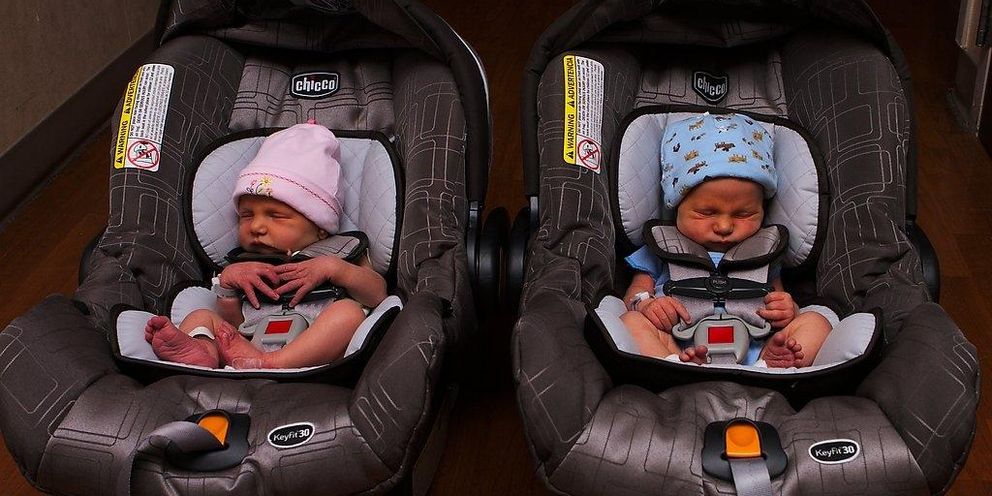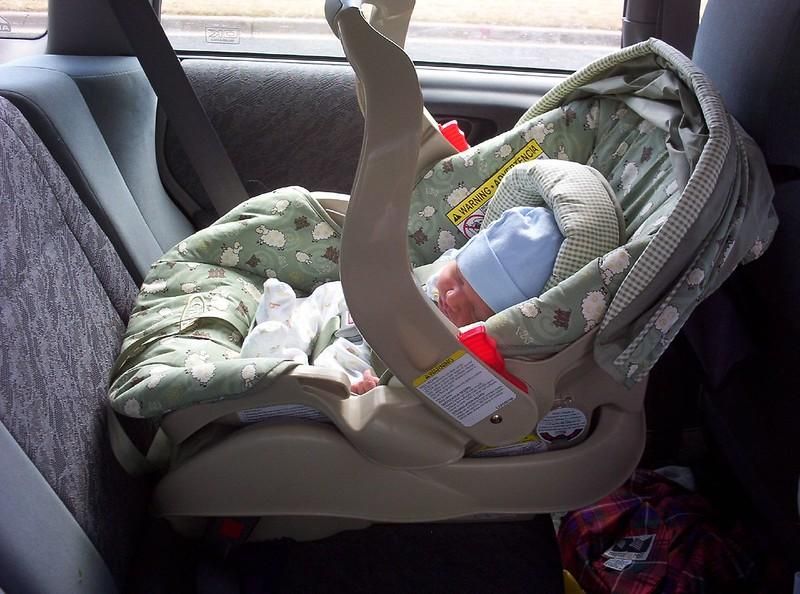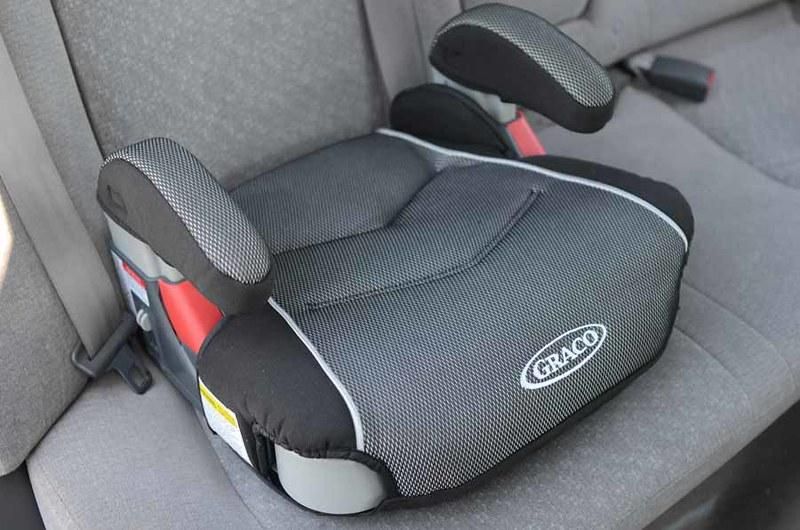
How to Keep Your Children Safe in the Car The Ultimate Guide to Child Car Seats
Image Credit: Russell Harrison Photography / flickr
As a parent or caregiver, your children’s safety is paramount. By now, you probably have baby gates, electrical outlet covers, and other devices to reduce the risk of accidents in the home. But what happens when you must take your child somewhere else? For many families, car rides are frequent, yet they are fraught with danger.
In fact, according to the Insurance Institute for Highway Safety (IIHS), crashes account for about one in four child deaths caused by accidental injury. The lion’s share of these crashes involves automobiles. Fortunately, fewer children die from car crashes now than they did several decades ago. Car safety devices like seatbelts, boosters, and car seats have all contributed to this decline.
The present article will help you choose the right car seat for the children in your life. We will also discuss how to use these car seats to maximize their effectiveness.

Image Credit: Wiegand Family / flickr
Importance of Child Car Safety
Perhaps the biggest reason why car seats are so effective is that they restrain children safely. Not only does this keep children from climbing into the front seat or bugging Mom and Dad while driving, but it also prevents the child from flying through the windshield in case of a crash. Before child safety seats were common, kids involved in crashes frequently sustained head injuries that could kill them. This doesn’t even count broken bones or soft tissue injuries.
Statistics around car crash-related injuries highlight the differences. Researchers point out that the death rate from automotive crashes in 1970 was about 28 per 100,000 US residents. That compares to the 2019 rate of 11.5 deaths per 100,000.
Why is the decline in the death rate so important? The biggest reason appears to be seatbelt and car seat mandates, which states started passing in the early 70s. Before that, free-range children and pets in the backseat of a car were commonplace. However, as restraints for passenger vehicles first became available and then became law, people were more likely to keep their seats when disaster struck and thereby avoided injury.
If you want an example of why seatbelts and car seats are so effective, think about the last time you traveled by plane. As an airplane hurtles down the runway, ready for takeoff, most passengers will feel like they are sinking into their seats. That sensation continues as the plane climbs to altitude. Likewise, as the plane lands, people feel like they’re going to be thrown out of their seats — and their seatbelt prevents this from happening. Although cars do not travel as fast, you can see the same principle whereby the rapid deceleration of a sudden stop or a car accident can eject you from your seat and cause injury.
Just like the flight attendant on an airplane enforces seatbelt use, there are seatbelt and child safety seat laws in every US jurisdiction. Generally speaking, every adult and youth in a car must wear a seatbelt. For younger children, there are different types of child safety seats. You should use these from infancy until your child is tall enough to wear a seatbelt safely. The maximum age for booster seats varies from one state to another. Sometimes, a height and weight limit is used instead. Failing to restrain your child properly can lead to tickets and fines. Always know the laws of your state and any state where you are traveling. You can find a handy guide at SafeRide4Kids.org.

Image Credit: Baby Logic / YouTube
Understanding Different Types of Child Car Seats
Unsurprisingly, there are several different types of safety seats for children. The designs and types vary based on the intended age of the child who will use it, compatibility with various car seatbelt systems, and the style of restraints. However, you should always choose a safety seat with federal approval. That way, you know that the seat is adequate for children who match the intended height and weight parameters for each model.
While there are differences in height and weight guidelines within seat types, there are some general guidelines that you can follow.
Infant car seats
Rear-facing infant car seats are the most protective type of child restraint and are designed for babies and toddlers. Depending on the specific model, you can use an infant seat until your child reaches between 30 and 40 pounds or exceeds the height limit for sitting in it comfortably.
Many infant seats serve multiple purposes. For instance, many families carry their babies in their rear-facing car seats. Often, those seats have a sunshade or umbrella attached. Depending on the restraint system of your car and the model, you may be able to clip the seat out and back in again very quickly. Some models also have brackets that let you use the car seat as a stroller by putting it on a base. Needless to say, this is a very convenient option.
Convertible car seats
Families who prefer to save money and keep the same car seat longer might consider a convertible model. In a nutshell, convertible car seats can be used both front-facing and rear-facing, depending on the child’s size. One car seat manufacturer specifies that you can have a seat facing front once the child exceeds 40 pounds. Then, you can keep using the seat until the child exceeds 65 pounds or 48 inches.
With that said, convertible seats generally won’t work with stroller bases or have an anchor system that lets you easily remove the seat for carrying. Here, you will trade one set of conveniences for another.
All-in-one seats
An all-in-one seat is a great choice if you want to buy a single car seat for your infant, and let it grow with your child. While some all-in-one states cannot handle the smallest babies (you may need a dedicated infant seat for that), they handle every other stage through a booster seat. Many of them will even let you start using the seat in the rear-facing position, often for longer than a traditional infant seat or convertible would.
There’s little question that these dates can be both convenient and cost-effective. There are also excellent if you don’t have much space for storing old seats used by one child until the next one is old enough to take them over. However, one reviewer points out that they are more complicated to use due to the number of straps and latches.
Booster seats
When your child reaches the maximum weight for your car seat, it’s time to get a booster seat. Every child is different, but on average you can switch seat types when they are about four or five. Booster seats come in types: backless and high-back. If you bought an all-in-one eight, the booster component will typically be a high-back. There are some exceptions if the seat was labeled as a 4-in-one, in which case you can remove the booster seat back when your child is ready.
Both booster seat types are safe, though smaller children and those who nap may prefer a seat with a back. That’s because the seat helps support the child’s head and neck and provides a place for sleeping children to rest their heads.
The most important thing to know about booster seats is that they don’t have a harness. The idea of a booster seat is to lift a child up on the car seat so that they can use an adult seatbelt safely. It’s a lot like a highchair for infants, which lets the child use a table like the adults around them.
Factors to consider
There is no question that car seats can be a significant expense. After all, the better ones frequently cost more than $200. And with your little munchkin growing so fast and always needing new clothes, it’s very tempting to take shortcuts when it comes to car seats.
Unfortunately, if you purchase the wrong seat, you can put your child at risk. Seats can become old and outdated, and therefore they come with an expiration date. Furthermore, because of their importance for safety, manufacturers and government frequently recall child seats. When you choose a child seat, be sure to check for recalls, especially if you’re buying from a retailer that frequently sells older models of consumer products. You don’t want to take a chance on such an important piece of equipment because if it fails, then your child could be injured.

Image Credit: Your Best Digs / flickr
Choosing the Right Child Car Seat
Putting your child in the right car seat involves more than checking product safety websites and verifying expiration dates. Even within those parameters, there are a lot of options available. You’ll need to narrow down your options to get your child’s best seat.
Here are some factors to consider.
Your child’s age, weight, and height
As we discussed above, every car seat has height and weight restrictions. These will vary from one seat to another, although convertible and all-in-one seats will have a larger range. Make sure that you choose a seat that is suitable for your child from a height and weight standpoint. Likewise, you’ll want to be sure that the restraint method is appropriate for your child’s age.
Your car
Although many consumers won’t think about this right away, you should always consider the size and features of your car. The seat should fit in your car properly, such as by sitting in the right position. Generally speaking, a seat user manual will tell you which angles are acceptable and indicate if certain automobiles are incompatible with their product. Because many companies put their user manuals online, finding this information for any seats you’re considering should be easy.
Similarly, make sure that you can easily install the seat in your car. This should be true whether you use a base for the seat or not. Your child’s car seat should be something that you can easily handle, whether it’s to put seats in a different car, or to lift out the main portion from its base to carry your baby.
Safety
While it’s a given that car seats are safety devices, they aren’t all created equal. Some seats are of better quality, or have more safety features. For example, small children need five-point restraints and good support for their head and neck. The NHTSA has a car seat finder which you can use to find recommendations and star ratings. Most of the ratings relate to safety, but they also consider ease of use and are a valuable resource. You can also find recalls on their website.
Price
As with most things, there are car seats at different price ranges, even within the same seat type. However, more expensive isn’t necessarily better. You probably don’t want to buy a bargain-basement seat without verifying that it has a very high safety record. Similarly, you should ensure that a high price is worth paying and that you can afford it. Nobody should overpay for a mediocre car seat.
Brand reputation
While reputations can change over time, it’s important to think about the brand of seats that you are considering. That’s because some brands of car seats are more reputable than others, even within the same price range. Similarly, particular brands might be having a bad year with quality, or a company can release something new and exceptional.
Be careful about used seats
It may be tempting to buy a car seat secondhand. This might be okay if you trust the source — like a friend whose kids are just a bit older than yours — but there are significant risks. For example, there might be some missing parts, or the seat may have been subject to a recall. It might also be too old. In any of these situations, the car seat may not be as effective as a new one, even when you consider the differences across brands.

Image Credit: BruceBlaus, CC BY-SA 4.0, / Wikimedia Commons
Correct Installation and Usage of Child Car Seats
Even the best car seats available require proper installation for maximum effectiveness. You will get model-specific instructions in the user manual, but there are a few pointers which are common across the industry.
Before you begin installation, carefully consider how you will place the seat into your car. You will need to put the seat in the back, next to a window. Those locations in every modern car have a special bracing system called LATCH. Essentially, these are books that help you secure the car seat so that it will provide adequate protection for your child. Furthermore, the middle seat won’t work because it’s too narrow and frequently not flat enough.
Next, think about whether you need a front or rear facing seat placement. Generally speaking, you should use a rear facing seat until your child is at least two, and up to age 4 if they still meet the height and weight requirements. Then, when your child is large enough, you can switch to a forward-facing seat.
How to properly secure your child
Like many other things, you must use your car seat properly to obtain the best protection for your child. For front and rear-facing car seats, this will be a five-point harness. Please your child in the seat, then draw the top harness down over its shoulders. The highest should lie across the shoulders Similarly to a backpack. Then, secure the bottom of the shoulder straps to the bracket on the bottom of the seat which goes between their legs. Finally, secure the chest clip. Make sure that the straps are tight enough to prevent injury.
Finally, be sure to adjust the straps as your child grows. Many car seats have a significant height and weight range, which means you may need to adjust the straps several times. Once again, the owners manual for your seat will provide the right advice.
Extra Safety Measures
While car seats and booster seats are important for the safety of any child that is too small to safely use an adult seatbelt, they aren’t the only way to keep kids safe around cars. Rather, there are several other safety precautions that you can use to prevent accidents.
Keep the car locked
All too often, kids get hurt by playing in and around their family car. This often happens at home, such as the garage or driveway. When younger children access the car unattended, they can lock themselves inside or wind up getting trapped. These situations can turn tragic if the child dies from too much weight or suffocation. Similarly, if your child accidentally causes the family car to roll into the street, this can cause an accident or worse. Fortunately, most of these incidents can be easily avoided by locking your car door.
Train your kids to watch for traffic
Frequently, we teach our kids to look both ways before crossing the street. However, some experts will recommend that you teach your child to look both ways and then check the other direction again. This makes it harder for someone to miss an oncoming car.
Use safety features as appropriate
Many children have been injured over the years by doors and windows. In particular, a lot of kids get their fingers stuck in windows or doors. Some children will even open the car door while the vehicle is moving. Fortunately, it’s easy to protect your children from these safety hazards by activating door and window safety measures. Specifically, you can configure the rear doors so that they cannot be opened from the inside. You can also set power windows so that only the driver can adjust them.
Model safe behaviors
Actions often speak louder than words, and this is rarely more true than in parenting. For this reason, you should always model safe behaviors. Wear your seatbelt whenever the car is moving, and avoid distracted driving. That way, your kids will learn that they should always take safety precautions. Finally, drive safely. Not only will this eventually teach your kids how to drive safely, but you’ll reduce the risk of accidents in the first place.
Conclusion
Car seats are highly effective at preventing car crash -related injuries and deaths. However, for maximum effectiveness you will need to install and use the car seats properly. You’ll also need to ensure that your child is writing in an appropriate seat for them, and the seat is not expired or subject to recalls. Fortunately, it’s relatively easy to verify this information and engage in best practices.
We hope that this article has been helpful to you, whether you are a parent or caregiver. If you know somebody who would benefit from reading this article, please pass it on. You can also link to it on social media where others can find the information. We would be honored to expand our impact in this way.
References:
https://www.iihs.org/topics/fatality-statistics/detail/children
https://saferide4kids.com/car-seat-laws-by-state/
https://www.babylist.com/hello-baby/best-car-seats
https://www.chiccousa.com/choosing-a-car-seat/convertible-car-seats/
https://www.nytimes.com/wirecutter/reviews/best-convertible-car-seats/
https://www.nhtsa.gov/equipment/car-seats-and-booster-seats
https://www.buckleupforlife.org/riding-safely/correct-use/
https://agworkers.com/follow-these-15-car-safety-tips-to-keep-your-child-safe/
Updated